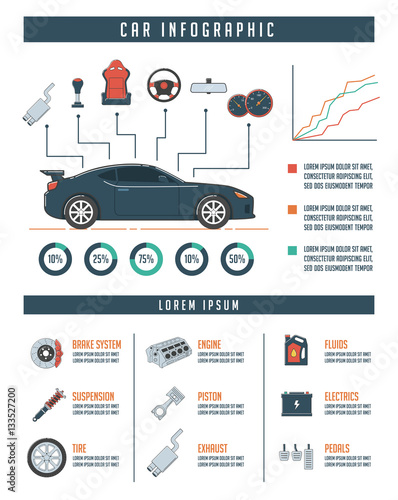Comprehending The Significance Behind Your Automobile'S Caution Lights: A Thorough Look
Comprehending The Significance Behind Your Automobile'S Caution Lights: A Thorough Look
Blog Article
Write-Up By-Termansen Winters
When you lag the wheel, those radiant warning lights on your control panel can be a bit puzzling. Do you know what they're trying to tell you about your automobile's wellness? Comprehending the relevance of these lights is vital for your security and the long life of your automobile. So, the next time among those lights appears, would not you want to analyze its message properly and take the essential steps to resolve it?
Common Warning Lighting and Interpretations
Identify usual caution lights in your auto and recognize their significances to make sure safe driving.
One of the most typical caution lights include the check engine light, which indicates concerns with the engine or emissions system. If this light comes on, it's crucial to have your automobile checked without delay.
The oil stress warning light suggests low oil stress, needing immediate interest to prevent engine damage.
A blinking battery light may suggest a damaged billing system, possibly leaving you stranded if not attended to.
The tire stress surveillance system (TPMS) light notifies you to low tire pressure, influencing car stability and fuel performance. Ignoring this could result in harmful driving problems.
The abdominal muscle light shows an issue with the anti-lock stopping system, compromising your capability to stop quickly in emergencies.
Finally, please click the next website page alerting light warns of engine getting too hot, which can result in extreme damage if not resolved quickly.
Comprehending these typical caution lights will aid you attend to issues quickly and maintain secure driving problems.
Value of Prompt Focus
Understanding the usual warning lights in your cars and truck is just the initial step; the relevance of promptly dealing with these cautions can't be emphasized enough to guarantee your security on the road.
When a warning light illuminates on your dashboard, it's your vehicle's means of connecting a possible concern that requires interest. Ignoring these warnings can bring about a lot more extreme troubles in the future, jeopardizing your safety and potentially costing you more in repairs.
read here to warning lights can protect against break downs and crashes. As an example, a blinking check engine light can show a misfire that, if left neglected, could create damage to the catalytic converter. Resolving this promptly can save you from a costly repair work.
Similarly, a brake system alerting light may signify low brake liquid or worn brake pads, crucial components for your safety and security when driving.
Do It Yourself Troubleshooting Tips
If you notice a caution light on your control panel, there are a few do it yourself troubleshooting pointers you can attempt prior to looking for expert assistance.
The initial step is to consult your auto's handbook to understand what the specific warning light suggests. In some cases the problem can be as simple as a loosened gas cap causing the check engine light. Tightening up the gas cap might resolve the problem.
An additional typical problem is a reduced battery, which can cause various cautioning lights. Inspecting the battery connections for corrosion and guaranteeing they're safe and secure might fix the problem.
If a warning light persists, you can attempt resetting it by detaching the cars and truck's battery for a few minutes and afterwards reconnecting it. Additionally, examining your automobile's fluid levels, such as oil, coolant, and brake fluid, can help repair cautioning lights connected to these systems.
Verdict
To conclude, understanding your cars and truck's warning lights is crucial for keeping your car running smoothly and safely. By quickly resolving these signals and knowing what they suggest, you can avoid costly repair services and potential break downs.
Keep in mind to consult your vehicle's guidebook for particular information on each cautioning light and take action appropriately to guarantee a trouble-free driving experience.
Keep notified, remain secure when traveling!
